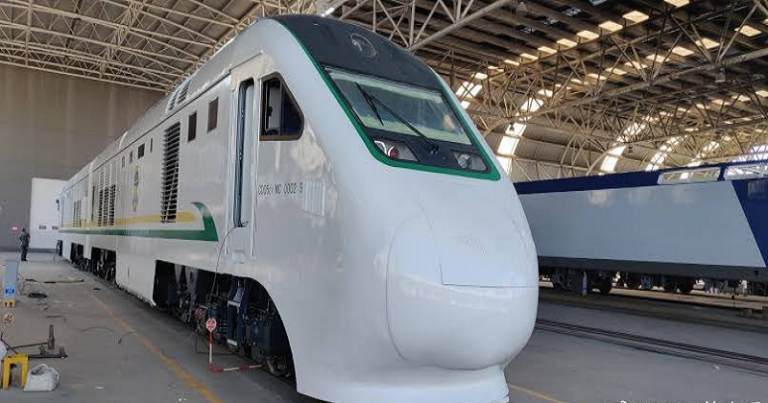
In today’s China, a telling shift is quietly taking place between Beijing and Shanghai—two of Asia’s most powerful economic engines. The change isn’t in their GDP rankings or political clout, but on the rails connecting them.
Every day, more Chinese travelers are ditching airplanes for bullet trains, opting for the comfort and reliability of high-speed rail. What was once a luxury has become routine—evidence, many believe, of a kind of transport efficiency that only China seems capable of delivering at such scale.
The numbers tell their own story. In 2023, over 52 million people took the high-speed train between Beijing and Shanghai. Flights on the same route? Just 8.6 million. The difference is so stark that it’s forced airlines into a defensive crouch. Cheaper fares, chauffeur services, flexible ticketing—air carriers are throwing every trick in the book at travelers who seem increasingly unwilling to return to airport hassles, turbulence delays, or the dreaded in-flight radio silence.
Register for Tekedia Mini-MBA edition 19 (Feb 9 – May 2, 2026): big discounts for early bird.
Tekedia AI in Business Masterclass opens registrations.
Join Tekedia Capital Syndicate and co-invest in great global startups.
Register for Tekedia AI Lab: From Technical Design to Deployment (next edition begins Jan 24 2026).
For business travelers, the shift is more than just a preference; it’s a strategy. China Railway now runs the distance—about 1,300 kilometers—in just over four hours, offering a seamless journey from city center to city center.
With trains departing more than 100 times a day in both directions, and services rarely skipping a beat regardless of weather, high-speed rail has carved out a dominance that’s almost impossible for airlines to match. The aircraft may fly faster, but the train arrives sooner when you factor in check-in, boarding, and the slow crawl from faraway airports.
“Going offline on a flight is a deal-breaker,” said Tong Lijun, deputy chief of Shanghai Hongqiao Railway Station, in an interview with Jiefang Daily. “Business travelers want to make the most of their time, and rail lets them do that—onboard internet, stable power, spacious seats. They can keep working the whole way.”
There’s something larger at play here than just a mode of transport. The rise of the bullet train as China’s preferred travel option speaks to something deeper—a showcase of infrastructure unmatched anywhere else in the world. While other countries argue over rail budgets, China has delivered a nationwide high-speed network that actually works. Trains reach speeds up to 350km/h, run with near-perfect punctuality, and are packed with thoughtful design: business cabins that rival airlines’ premium classes, quiet cars for undisturbed work, and boarding procedures that feel frictionless.
China’s airlines are fully aware of the threat. In an April report, the China Air Transport Association openly acknowledged that high-speed rail is “eroding” their customer base, especially among high-end travelers.
“With its continuous increase in speed, high-speed rail has a strong appeal in terms of total door-to-door commuting time and regularity,” it said.
The lure isn’t just about speed anymore—it’s about predictability, comfort, and connection. Flying, by contrast, increasingly feels like a gamble.
However, the aviation sector is not giving up. Both China Eastern Airlines and Air China have rolled out loyalty perks in recent months, including limousine pickups and flexible transfers between flights. Fares are being slashed too. On some days, flying between Beijing and Shanghai can cost less than a second-class train ticket. But price isn’t everything. When passengers know they’ll be on time, seated comfortably, and fully connected for the duration of the trip, the extra few yuan often seem like a price worth paying.
Meanwhile, the rail line’s financials are equally telling. Despite a rocky start riddled with delays and criticism, the Beijing-Shanghai High-Speed Railway has become one of the most profitable transport operations in the world. In 2024, it pulled in 42 billion yuan (about $5.8 billion) in revenue, with profits jumping over 10 percent to hit 12.8 billion yuan.
That level of success stands in contrast to many of China’s other rail lines, especially in the sparsely populated West, where the high-speed dream is often weighed down by heavy losses. But in the country’s eastern corridor, the trains don’t just run—they thrive.
The transformation between Beijing and Shanghai is fast becoming a case study of what state-led infrastructure can achieve when done with scale, speed, and commitment. It’s a point not lost on transport experts watching from abroad, where such comprehensive, high-speed connectivity remains a political talking point rather than a functional reality.
In Japan, the famed Tokaido Shinkansen runs nearly 150 trains daily in each direction between Tokyo and Osaka. Experts in China say matching or exceeding that frequency is no longer out of reach, and calls are growing to add even more service along the Beijing-Shanghai route. With the two cities generating a combined 10 trillion yuan in economic output last year, the corridor is only getting busier.
But perhaps the most striking takeaway is how normal it has all become. In China today, riding a bullet train at 217 miles per hour is no longer a novelty—it’s just how people get from A to B. For many watching from outside, that level of integration still feels decades away. Inside China, it’s already yesterday’s news.
And for the aviation industry trying to play catch-up, that’s the real turbulence.



